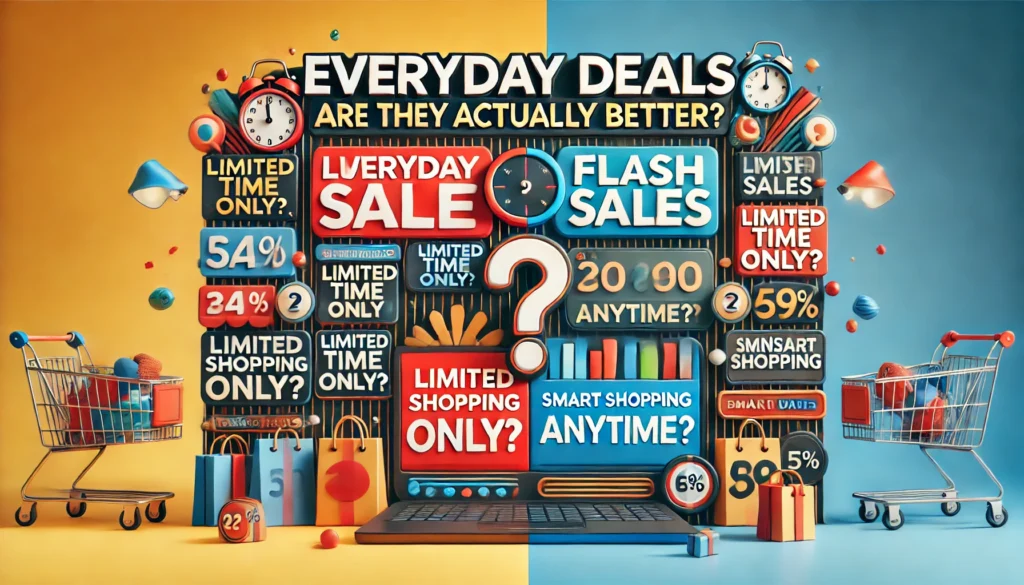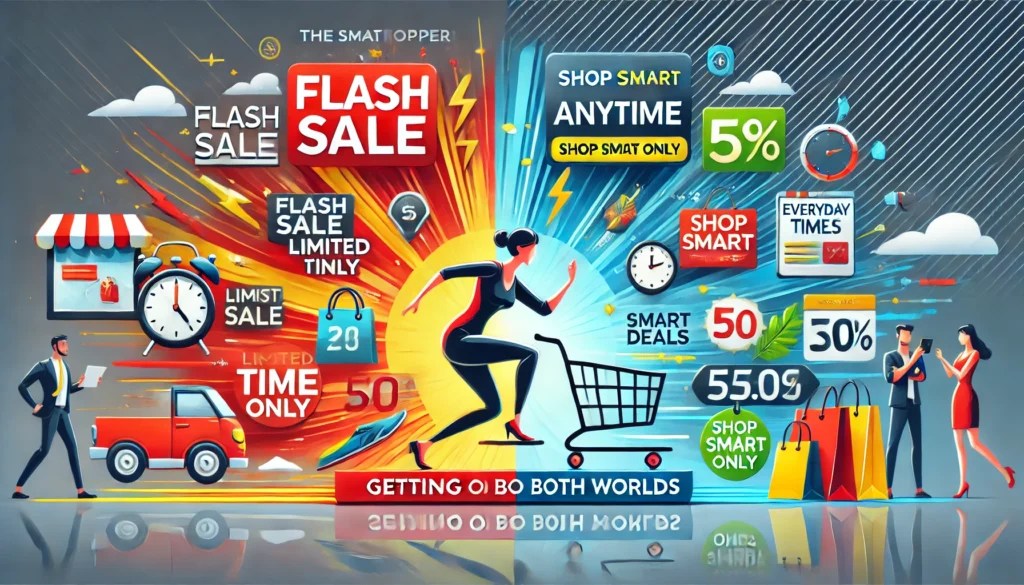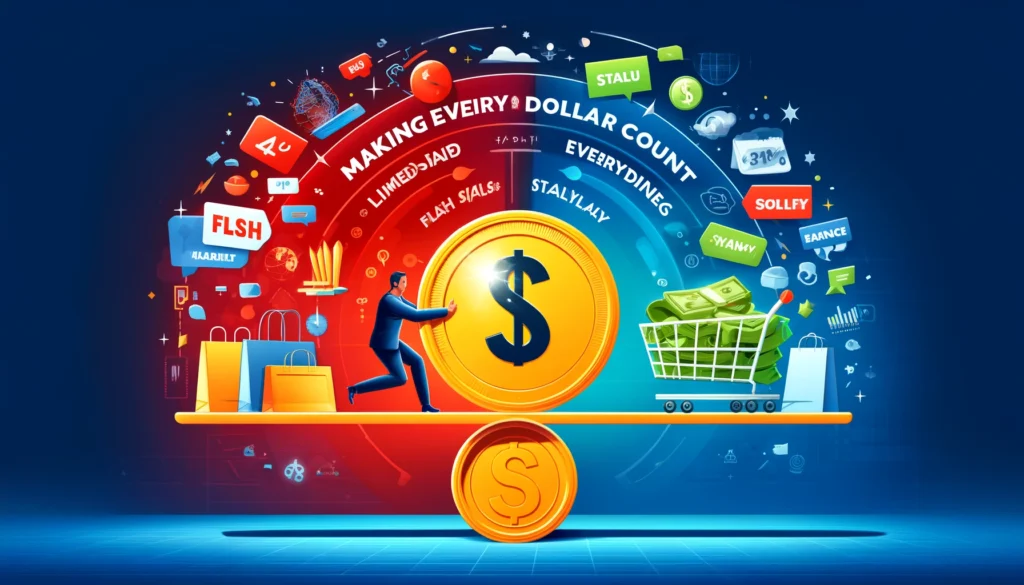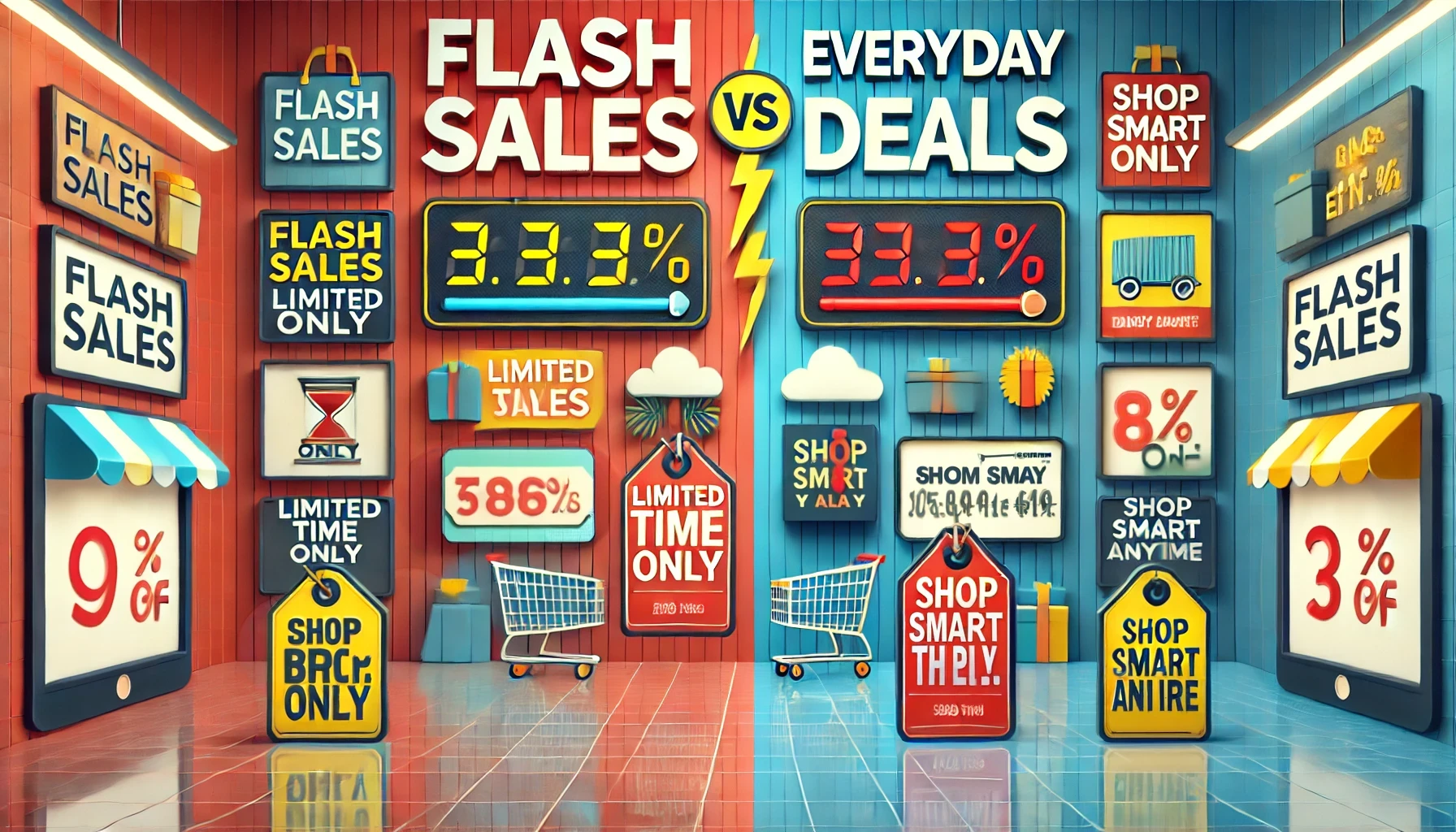Ever felt the rush of snagging a daily deal at the last second, only to find out later that it wasn’t the best price? Or worse, did you buy something in a flash sale and regret it the next day? We’ve all been there.
Retailers are experts at creating urgency, whether through countdown timers, exclusive discounts, or one-time offers. But how do you know when to purchase and when to wait? Are flash sales really better than everyday deals, or is it just clever marketing?
The truth is, both flash sales and everyday deals have their advantages. Understanding how brands sell products and price their inventory can help you make smarter shopping decisions—so you never feel like you missed out on a better deal.
What Are Flash Sales and How Do They Work?
A flash sale is a limited-time discount event designed to raise awareness, create urgency, and drive quick purchases. Unlike regular sales events, these promotions last for a short period, often a few hours or days, and offer deep discounts on select items.
Why Do Businesses Run Flash Sales?
Companies use flash sales to:
- Sell excess inventory before new stock arrives.
- Attract new customers with attention-grabbing discounts.
- Increase short-term sales by creating urgency.
The Flash Sale Playbook
Retailers use specific tactics to influence buying behavior, including:
- Countdown timers make shoppers feel they need to purchase immediately.
- Limited stock alerts (“Only 5 left!”) to add pressure.
- Social media promotions to spread excitement and bring in potential customers.
But Are Flash Sales Always a Good Deal?
Not necessarily. Some brands inflate original prices before discounting them to make a deal look better than it really is. And if a store runs flash sales too often, shoppers start waiting instead of buying, causing flash sale fatigue.
Are everyday deals the smarter choice? Let’s find out.
Everyday Deals: Are They Actually Better?

If you hate the stress of flash sales, everyday deals might be the better option. Instead of pushing urgency, these discounts offer consistent savings without forcing shoppers to decide quickly.
What Counts as an Everyday Deal?
- Loyalty programs: Exclusive discounts for loyal customers who shop regularly.
- Daily deals: Select items that go on sale every day but without a rush.
- Price-match guarantees: If a competitor offers a lower price, you can get the difference refunded.
Why Shoppers Love Everyday Deals
- No buyer’s remorse; you can think before you purchase.
- Encourages customer loyalty through repeat savings.
- Let shoppers wait for the best price instead of feeling pressured.
The downside? Everyday deals don’t always offer the deep discounts seen in flash sales. But they do provide price stability, which means fewer surprises for your budget.
Flash Sales vs. Everyday Deals: When Should You Buy?
Not all sales events are created equal. Knowing when to buy can mean the difference between real savings and falling for a marketing trap.
When Are Flash Sales Better?
- Seasonal Clearance and Excess Inventory: Retailers often use flash sales to quickly move excess inventory, offering significant discounts during these events.
- Genuine Deep Discounts: Utilizing price tracking tools like CamelCamelCamel or Keepa can help verify if a flash sale offers a substantial discount compared to historical prices.
- High-Value Items: For products that rarely go on sale, a well-timed flash sale can provide rare savings opportunities.
When Are Everyday Deals Better?
- Immediate Necessities: For essential items needed promptly, everyday deals provide consistent savings without the wait.
- Loyalty Programs: Participating in retailer loyalty programs can offer ongoing benefits and discounts, fostering long-term customer relationships.
- Price Stability: Everyday deals offer predictable pricing, reducing the stress of timing purchases during unpredictable flash sales.
How to Decide?
- Price Tracking Tools: Utilize tools like Paribus to monitor price changes and ensure you’re getting the best deal.
- Retailer Flash Sale Frequency: If a retailer frequently holds flash sales, it might indicate that waiting could yield better discounts.
- Flash Sale Fatigue: Be cautious of retailers that overuse flash sales, as this can lead to consumer fatigue and diminished trust.
For shoppers aiming to maximize savings without rushing, combining both strategies may be the most effective approach.
How Retailers Use Flash Sales to Influence Buying Behavior
Retailers carefully design flash sales to create a sense of urgency, often prompting buyers to act swiftly. Understanding these tactics can help consumers make informed decisions.
Common Flash Sale Strategies
- Countdown Timers: Implementing time limits encourages immediate purchases by leveraging the fear of missing out (FOMO).
- Limited Stock Messaging: Highlighting scarce availability makes deals seem more exclusive, prompting quicker decisions.
- Email Marketing and Social Media Promotions: Retailers amplify urgency through targeted campaigns, attracting potential customers and increasing traffic.
The Downsides of Flash Sales
- Inflated Original Prices: Some retailers have been known to temporarily increase prices before a sale to exaggerate the discount.
- Flash Sale Fatigue: Overuse of flash sales can lead to consumer fatigue, diminishing their effectiveness over time.
- Limited Return Policies: Quick purchasing decisions during flash sales can result in regret, especially if return policies are restrictive.
How to Spot a Genuine Flash Sale
- Price Tracking Tools: Utilize services like Google Shopping to compare prices across retailers and verify discounts.
- Review Past Sales Events: Researching a retailer’s previous sales can provide insights into the frequency and authenticity of their discounts.
- Avoid Urgency Traps: Be skeptical of high-pressure tactics and ensure the purchase aligns with your needs and budget.
Understanding these strategies helps shoppers avoid impulse purchases and focus on genuine savings.
The Smart Shopper’s Strategy: Getting the Best of Both Worlds

For shoppers who want the best deals without falling for marketing tricks, combining flash sales and everyday deals can lead to bigger savings. Instead of choosing one over the other, a strategic approach helps maximize discounts while avoiding impulse purchases.
1. Track Prices Before You Buy
- Use tools like CamelCamelCamel and Keepa to monitor price changes.
- If a retailer runs flash sales often, waiting may result in an even lower price later.
- Some retailers inflate prices before a sales event, so tracking prices prevents falling for false discounts.
2. Use Loyalty and Cashback Programs
- Many stores offer loyal customers exclusive discounts through email marketing.
- Cashback apps like Rakuten and Honey can add savings on top of daily deals.
- Some credit cards provide additional cashback or price protection.
3. Wait for the Right Moment
- If an item is available year-round, consider waiting for the next major sales event like Black Friday or Cyber Monday.
- If stock is low, a short-term sale might be the best opportunity to buy.
- Some brands hold flash sales near holidays, such as Memorial Day, offering better discounts than regular promotions.
4. Avoid Impulse Buys
- A countdown timer doesn’t always mean an item won’t be available later.
- If an item wasn’t already on your shopping list, it’s worth waiting rather than rushing to purchase.
- Set price alerts instead of feeling pressured by limited-time sales.
Using these strategies, shoppers can get the best of both worlds—benefiting from flash sales without the risk of buyer’s remorse.

Making Every Dollar Count
So, should you chase flash sales or stick with everyday deals? The smartest approach is to use both strategically. Tracking prices before buying ensures discounts are real, while loyalty rewards and cashback programs can make everyday deals even better.
Waiting for seasonal sales events often leads to the lowest possible prices, but it’s also important not to let urgency tactics pressure you into buying something you don’t need. Smart shoppers plan their purchases, take advantage of deep discounts, and never fall for fake urgency.
Before your next purchase, check out UnsubscribeDeals for the latest verified discounts and shopping insights. Make informed choices and never overpay again.
